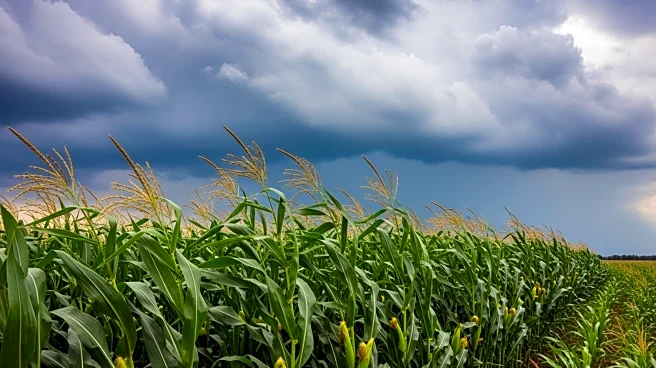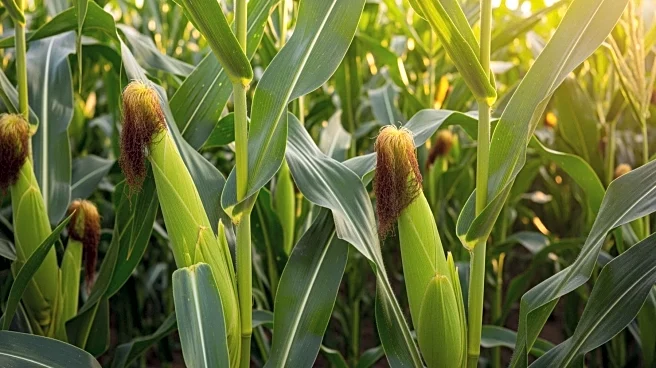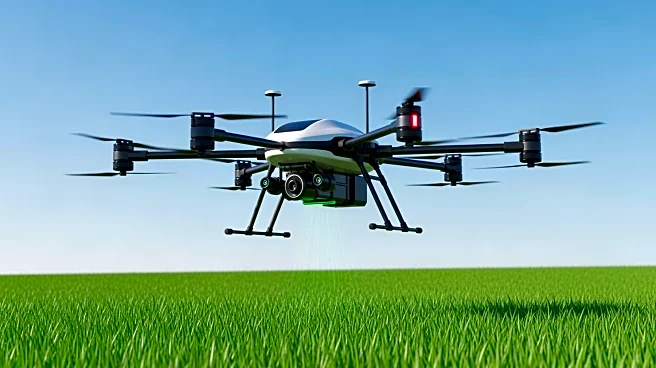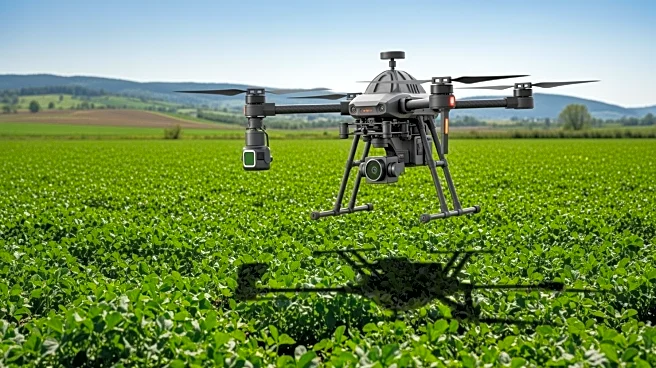What's Happening?
In Montgomery County, Iowa, Lucas Oster has reported significant yield improvements in his corn crops due to the use of Meristem Crop Performance products. Despite a challenging growing season marked by
disease and dry conditions, Oster's corn on corn plot demonstrated notable yield advantages with Meristem's products, particularly the Hopper Throttle MaxStax Corn. The plot, in its eighth year, was planted with a 111-day hybrid and treated with various Meristem products, resulting in a yield of 241.36 bushels per acre for the MaxStax treatment, compared to 218.48 for the untreated control. The products utilized include Revline Hopper Throttle Corn Ether, Guard X, and MaxStax, all of which contributed to increased yields through enhanced microbial activity and pest resistance.
Why It's Important?
The success of Meristem's products in Iowa highlights the potential for advanced agricultural technologies to mitigate the impacts of adverse weather and disease on crop yields. This is particularly significant in a year where many farmers in the region are experiencing lower yields. The ability to maintain or even increase productivity under such conditions can provide a competitive edge and financial stability for farmers. Additionally, the use of biofungicides and other biological solutions aligns with growing environmental concerns, offering a sustainable alternative to traditional chemical treatments. This development could influence broader adoption of similar technologies across the agricultural sector, potentially reshaping farming practices and improving food security.
What's Next?
As the agricultural community observes the outcomes of Meristem's products, there may be increased interest and investment in similar technologies. Farmers facing similar challenges might consider adopting these solutions to enhance their crop resilience. Furthermore, ongoing research and development in agricultural biotechnology could lead to even more effective products, further supporting farmers in managing environmental and biological stresses. The success in Iowa could serve as a case study for other regions facing similar agricultural challenges.











